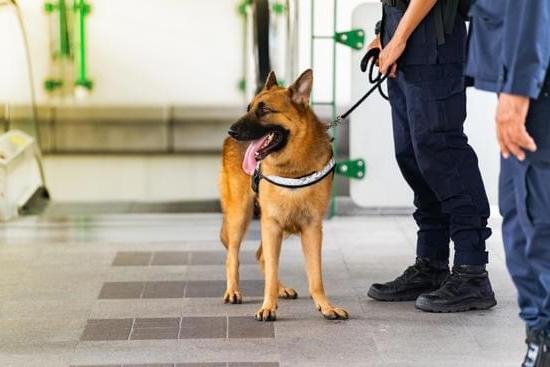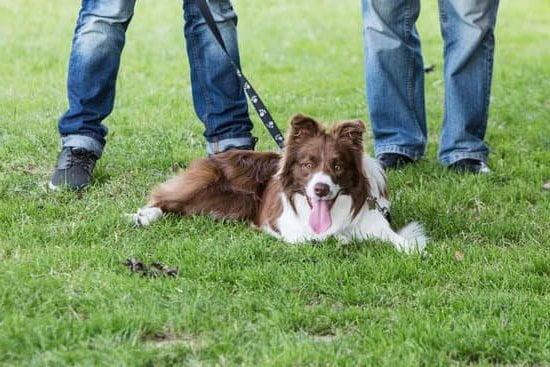Crate training is a widely recommended and effective method for teaching your dog essential skills and providing them with a safe space of their own. Whether you have a new puppy or an adult dog, crate training can play a crucial role in their behavior and well-being.
In this article, we will explore the key points of crate training your dog, including the importance of crate training, choosing the right crate, introducing the crate to your dog, making it a comfortable space, establishing a routine, using positive reinforcement techniques, addressing challenges and FAQs, and gradually fading dependency on the crate.
One of the first things to understand about crate training is that it is not meant to be a form of punishment or confinement but rather a positive tool for teaching your dog important skills. Crate training has numerous benefits both for you as the owner and for your dog.
For owners, it helps prevent unwanted behaviors such as chewing on furniture or accidents around the house while also providing peace of mind when leaving your dog alone. Dogs benefit from having their “den” where they feel secure and can relax without distractions or fear.
It’s important to realize that crate training is suitable for dogs of all ages and breeds. From puppies who are just learning about boundaries to older dogs who may need some extra guidance in areas such as potty training or anxiety management, crate training can make a significant difference in their overall behavior and happiness.
By understanding these key points of crate training your dog, you can embark on this journey with confidence and create a harmonious living environment for both you and your beloved furry companion.
Understanding the Importance of Crate Training
Crate training is an important aspect of dog training that should be implemented for dogs of all ages and breeds. This section will explain why crate training is crucial and how it can positively impact a dog’s behavior and overall well-being.
One of the main reasons crate training is important is because it provides a safe and secure space for your dog. Dogs have natural denning instincts, and a crate can mimic the confinement and security of a den. Having a designated space can help reduce anxiety and stress in dogs, especially during times when they may need to be confined, such as when traveling or when left alone at home.
Furthermore, crate training can assist in managing your dog’s behavior. Being able to confine your dog to their crate when needed can prevent destructive behaviors such as chewing on furniture or shoes, digging in the yard, or getting into potentially dangerous situations when not supervised. Crate training also aids in housebreaking, as dogs naturally avoid soiling their sleeping area and will learn to “hold it” until they are let out of their crate.
In addition to the practical benefits, crate training can greatly contribute to a dog’s overall well-being. Providing a safe space that they can call their own promotes feelings of security and helps them relax. It can also serve as a helpful tool in managing overstimulation or anxiety in dogs by giving them a place where they can retreat from overwhelming situations.
By understanding the importance of crate training for dogs, owners can appreciate its numerous benefits for both themselves and their furry companions. Crate training not only provides safety and security but also facilitates better behavior management and promotes overall well-being. Choosing the right type of crate for your dog’s needs and providing a comfortable environment within it are essential aspects that will be further discussed in the following sections.
Choosing the Right Crate for Your Dog
When it comes to crate training your dog, selecting the right crate is essential for their comfort and safety. There are various types of crates available, including wire crates, plastic crates, and soft-sided crates. Each type has its own advantages, so it’s important to consider your dog’s needs and preferences when making a choice.
Wire crates are popular because they provide good ventilation and visibility for your dog. They also tend to be more durable and easy to clean. Plastic crates, on the other hand, offer more privacy and can create a den-like feeling for your dog. They are also lightweight and easier to transport. Soft-sided crates are great for travel as they are lightweight and foldable. However, they may not be suitable for dogs that like to chew or scratch.
After deciding on the type of crate, you need to ensure you choose the appropriate size for your dog. A crate should be big enough for your dog to stand up, turn around, and lie down comfortably but not so large that they have plenty of extra space. Having too much room in the crate may lead to accidents as dogs generally do not like soiling their sleeping area.
Consider taking measurements of your dog while they are standing up tall from the floor to the top of their head and from the tip of their nose to the base of their tail. Add a few inches on each measurement to determine the minimum dimensions needed for a proper-sized crate.
Once you have chosen the right size and type of crate, it is crucial to select materials that prioritize your dog’s safety and well-being. Look for crates made with non-toxic materials that won’t harm your dog if they decide to chew on them. It’s also important that there are no sharp edges or parts that could potentially injure your pet.
Taking these factors into consideration will help ensure that you select an appropriate crate that meets both your dog’s needs and your own. By providing a safe, comfortable space for your dog, you lay the foundation for successful crate training and help them feel secure and content in their new environment.
| Type of Crate | Advantages |
|---|---|
| Wire crates | Good ventilation and visibility, durable and easy to clean |
| Plastic crates | More privacy, lightweight and den-like feeling for dogs |
| Soft-sided crates | Foldable and lightweight for travel |
Introducing the Crate to Your Dog
Once you have chosen the right crate for your dog, it’s time to introduce them to their new space. The key to successfully introducing the crate is to create a positive association and make it a comfortable and inviting environment for your dog. Here are some steps to help you introduce the crate to your dog:
- Start by placing the crate in an area of your home where your dog spends a lot of time. This will allow them to get familiar with the crate’s presence without feeling overwhelmed.
- Make the crate appealing by adding soft bedding, toys, and blankets inside. You want your dog to see it as a cozy and comfortable space.
- Initially, leave the door of the crate open so that your dog can explore it at their own pace. Encourage them with treats or praise when they approach or show any interest in the crate.
- Gradually start feeding your dog near the crate or even inside it. This helps create positive associations and shows them that good things happen around or inside this new space.
- Once your dog seems comfortable around the crate, you can start encouraging them to enter it by tossing treats inside or placing their favorite toys near the entrance of the crate.
- As your dog becomes more confident, you can start using commands such as “crate” or “kennel” while encouraging them to enter and exit the crate on cue.
- It’s important to never force your dog into the crate or use it as a form of punishment. This will only create negative associations and make them fearful of their new space.
By taking these steps gradually and patiently, you are setting your dog up for success in accepting their new crate as a safe place. Remember that each dog may have different comfort levels and it may take some dogs longer than others to adjust. Be consistent in providing positive reinforcement and creating a calm atmosphere around the crate. Soon enough, your dog will view the crate as their own special den where they can retreat and relax.
| Steps to Introduce the Crate |
|---|
| – Place the crate in a familiar area of your home |
| – Add soft bedding, toys, and blankets inside for comfort |
| – Leave the door open initially for exploration |
| – Feed your dog near or inside the crate to create positive associations |
| – Encourage them to enter with treats or favorite toys |
Making the Crate a Comfortable Space
Creating a Cozy Environment
When crate training your dog, it’s essential to create a comfortable and inviting space to help them feel at ease. One way to accomplish this is by selecting the right bedding for your dog’s crate. Look for bedding that is soft, durable, and easy to clean.
Avoid materials that may pose a choking hazard or be easily torn apart. It’s also important to choose bedding that is suitable for the climate in which you live. For example, if you live in a warmer climate, opt for breathable and lightweight bedding.
In addition to bedding, consider offering your dog a few toys or chew bones inside the crate. These can provide mental stimulation and help alleviate boredom while they are alone. Be sure to select toys that are safe and durable, as certain types of toys may be a choking hazard or easily destroyed by your dog.
Using Calming Techniques
To further enhance their comfort and relaxation in the crate, you can employ various calming techniques. One effective technique is using an item with your scent on it, such as an old t-shirt or blanket. Placing this item in the crate can provide your dog with a sense of familiarity and security when you’re not around.
Another option is utilizing pheromone sprays or diffusers designed specifically for dogs. These products release synthetic versions of natural pheromones that help create a soothing atmosphere for your dog.
Remember to avoid using harsh lighting near the crate as it can disrupt their sleep patterns. Instead, use softer lighting options such as dim lamps or nightlights to create a calm environment.
Making Gradual Adjustments
As your dog becomes more accustomed to spending time in the crate, you can gradually make adjustments to increase their comfort level. Start by leaving the door open during short periods when they are relaxed inside the crate. This allows them the freedom to come and go as they please. Additionally, you can begin incorporating crate time during activities such as mealtime or chew sessions to associate positive experiences with being in the crate.
Remember that every dog is unique, and their comfort level may vary. Pay attention to their body language and behavior to gauge how they are adapting to the crate. If you notice signs of stress or discomfort, take a step back and proceed more slowly with the process. The goal is for your dog to view the crate as a safe, comfortable space where they can relax and unwind.
Establishing a Crate Training Routine
Once you have introduced the crate to your dog and they have started to associate it with positive experiences, it is important to establish a crate training routine. A consistent routine will help your dog adjust to their new environment and feel secure in their crate. Here are some steps you can follow to establish a crate training routine:
- Set a Schedule: Dogs thrive on routines, so it is essential to set a schedule for when your dog should be in the crate. This includes regular feeding times, potty breaks, exercise periods, and crate time. Consistency is key, as it helps your dog understand what is expected of them.
- Gradually Increase Crate Time: Start by having short periods of time where your dog is in the crate while you are at home with them. Keep them occupied with toys or treats during this time. Slowly increase the duration of crate time over several days or weeks, depending on your dog’s comfort level.
- Create Positive Associations: Whenever you put your dog in the crate, make sure to provide treats or praise as a reward. This will help them associate the crate with positive experiences and reinforce good behavior. Additionally, avoid using the crate as a form of punishment, as this can create negative associations.
- Incorporate Crate Time During Alone Time: Once your dog is comfortable spending short periods alone in the crate while you are at home, gradually introduce longer periods of alone time outside the house. Start with small increments and gradually increase it based on your dog’s progress.
- Use Toys and Comfort Items: Make the crate more inviting by placing toys, chew bones, or puzzle games inside for mental stimulation during crate time. Additionally, consider adding bedding or blankets that have your scent on them to provide comfort and familiarity.
Remember that every dog is unique, so be patient and adjust the routine according to their individual needs and progress. Pay attention to your dog’s behavior and make any necessary changes to make them feel more comfortable in their crate. With time and consistency, your dog will start to see the crate as their safe and cozy space.
List of Steps for Establishing a Crate Training Routine
- Set a Schedule
- Gradually Increase Crate Time
- Create Positive Associations
- Incorporate Crate Time During Alone Time
- Use Toys and Comfort Items
Using Positive Reinforcement Techniques
Positive reinforcement is a crucial aspect of crate training your dog. By using positive reinforcement techniques, you can create a positive association between your dog and their crate, making the training process more enjoyable for both of you. This section will explain the significance of positive reinforcement during crate training and offer strategies for rewarding your dog’s good behavior.
Why Positive Reinforcement is Important
Using positive reinforcement involves rewarding your dog for exhibiting desired behaviors, such as entering their crate willingly or staying calm inside. This technique not only helps motivate your dog to repeat these behaviors but also strengthens the bond between you and your furry friend. Positive reinforcement increases your dog’s confidence and trust in you, which contributes to their overall well-being.
Instead of scolding or punishing your dog for undesirable behavior, focus on redirecting their attention to the desired behavior and rewarding them when they comply. Utilizing positive reinforcement creates an environment where your dog feels safe, happy, and loved while being trained.
Strategies for Positive Reinforcement
When it comes to crate training, there are various ways to incorporate positive reinforcement. Here are some tried-and-true strategies:
- Treats: Use small, high-value treats to reward your dog whenever they enter their crate voluntarily or stay quiet inside. Choose treats that are nutritious and appetizing to make them even more enticing for your pup.
- Verbal Praise: Dogs thrive on verbal praise and encouragement from their owners. Whenever your dog exhibits desirable behaviors related to the crate, such as settling down calmly or going into the crate on command, shower them with verbal praise in a cheerful tone.
- Toys: Some dogs may respond well to having a favorite toy in their crate. Offer toys that they particularly enjoy playing with as an additional reward for good behavior in or around the crate.
- Clicker Training: Clicker training is another effective method to reinforce positive behaviors during crate training. The sound of a clicker marks the exact moment your dog does what you want, indicating that a reward is coming. Pairing the click with treats or praise helps create a clear association between the behavior and the positive consequence.
Remember to be consistent in your use of positive reinforcement techniques and provide immediate rewards to reinforce good behavior effectively. Each dog is unique, so observe which rewards work best for your furry companion and adjust accordingly.
By incorporating positive reinforcement into your crate training routine, you can build a strong foundation for your dog’s understanding and acceptance of their crate. This will not only make the training process enjoyable but also ensure that your dog views their crate as a safe, comfortable space they willingly enter on their own.
Dealing with Common Challenges and FAQs
Crate training is an effective method for teaching dogs proper behavior and providing them with a safe and secure space. However, like any new training technique, it can come with its own set of challenges. In this section, we will address some common concerns and frequently asked questions that dog owners may have when it comes to crate training.
One common challenge that dog owners face is how to deal with a dog’s initial resistance or anxiety towards the crate. It’s not uncommon for dogs to feel unsure or fearful when introduced to a confined space. To overcome this, it’s important to create positive associations with the crate.
Start by making the crate inviting and comfortable, using bedding, toys, and blankets that your dog enjoys. Gradually introduce the crate by placing treats or toys inside to encourage exploration. Avoid forcing your dog into the crate or using punishment as this could worsen their fear.
Another common concern is how long a dog can safely stay in a crate. The duration of time depends on several factors such as your dog’s age, breed, and individual needs. Puppies generally have limited bladder control and should not be crated for more than a few hours at a time.
Adult dogs can typically stay in the crate for longer periods but still need regular breaks for exercise and bathroom breaks. A general guideline is to limit crate time to four hours during the day for adult dogs.
Frequently asked questions about crate training revolve around issues such as excessive whining or barking while in the crate or how to transition from using the crate regularly to allowing more freedom in the house. Excessive vocalizations may indicate that your dog is feeling anxious or frustrated in the confined space. Addressing these issues requires patience and consistency in training.
It’s important not to give in to your dog’s demands by letting them out of the crate during these episodes as it reinforces undesirable behavior. Instead, try to identify the cause of their distress and address it accordingly.
Transitioning from regular crate use to allowing more freedom in the house can be done gradually. Start by gradually extending the length of time your dog spends outside of the crate while closely supervising them. If they demonstrate good behavior during these periods, you can further increase their freedom and independence. However, keep in mind that some dogs may continue to benefit from having access to a crate as a safe space throughout their lives.
By addressing common challenges and answering frequently asked questions, dog owners can be better prepared for any obstacles that may arise during the crate training process. Remember to be patient with your dog and always provide positive reinforcement for good behavior. With consistency and a well-designed training routine, successful crate training is achievable, ultimately benefiting both you and your furry companion in the long run.
Gradually Extending Crate Time and Fading Dependency
Once your dog has become comfortable and settled with the crate, it is important to gradually extend the amount of time they spend in it. This process helps them develop a sense of independence and trust while still feeling secure in their crate. It is essential to approach this step with patience and consistency to ensure success.
Start by extending the length of time your dog spends in the crate by just a few minutes at a time. For example, if your dog is currently spending 30 minutes in the crate comfortably, you can try increasing it to 35 minutes for a few days before moving on to longer durations. This gradual approach allows your dog to adjust incrementally without feeling overwhelmed.
Throughout this process, it is crucial to monitor your dog’s behavior and comfort level. Watch for any signs of distress or anxiety, such as excessive panting or whining. If you notice these signs, it may indicate that you are progressing too quickly, and you should dial back the duration before trying again later.
Once your dog can comfortably stay in their crate for an extended period, it’s time to start fading their dependency on the crate. Begin by leaving the door of the crate open while they are inside during their designated crate time. This allows them freedom of movement and gradually introduces them to being confined only when necessary.
As your dog becomes more reliable and trustworthy outside of the crate, you can start experimenting with leaving them uncrated for short periods while you are at home. Start with just a few minutes and gradually increase it over time as long as they continue to demonstrate good behavior and don’t engage in destructive or inappropriate behaviors.
Remember that every dog adjusts at their own pace, so be patient and understanding throughout this process. Some dogs may take longer than others to feel comfortable outside of the crate, while some may naturally adjust quicker. The key is maintaining consistency and positive reinforcement so that your dog understands what is expected of them.
Gradually extending crate time and fading dependency will ultimately help your dog become more independent and secure, allowing them to have freedom while still feeling safe in their designated space. With patience and consistency, you can successfully use the crate as a valuable tool in your dog’s development.
Conclusion
In conclusion, crate training your dog can have numerous benefits for both you and your furry companion. By providing a safe and secure space for your dog, crate training can help improve their overall behavior and well-being. It is important to choose the right crate for your dog, ensuring that it is the appropriate size and made of materials that will keep them comfortable and safe.
When introducing the crate to your dog, it is crucial to create positive associations and avoid any negative experiences. Making the crate a cozy and inviting space by using bedding, toys, and blankets can further enhance their comfort and relaxation. Additionally, establishing a consistent crate training routine can help your dog adjust and feel secure in their new environment.
Using positive reinforcement techniques during crate training is essential in building a strong association between your dog and their crate. Rewarding good behavior will encourage them to see the crate as a positive place to rest and relax. It is also important to address any common challenges or concerns that may arise during the process, providing helpful solutions to assist both you and your dog.
As your dog becomes more comfortable and trustworthy, you can gradually extend the length of time they spend in the crate. Eventually, with successful crate training, you may find that your dog no longer relies on the crate as much as they did before. Celebrate these milestones in their development.
Overall, embracing crate training can be a valuable tool for promoting positive behavior in dogs of all ages and breeds. With patience, consistency, and dedication, you can ensure that both you and your beloved pet reap the benefits of successful crate training. So why wait? Start crate training today.
Frequently Asked Questions
How do I get my dog to stop crying in his crate?
To get your dog to stop crying in his crate, it’s important to first understand why he is crying. Dogs may cry in their crates due to separation anxiety, discomfort, or boredom. Start by ensuring that the crate is comfortable and inviting for your dog. Place a soft blanket or bed inside, along with some of his favorite toys or treats. Introduce the crate gradually, allowing your dog to explore and associate positive experiences with it.
Associate the crate with positive things such as feeding him inside it or providing special treats while he’s in there. Implement a gradual training approach by starting with short periods of time in the crate and gradually building up the duration. Provide plenty of exercise and mental stimulation outside of the crate to reduce excess energy and boredom, which can contribute to crying. Consider seeking professional advice if the crying persists or if you suspect underlying anxiety issues.
How long does it take to crate train a dog?
The duration of crate training for a dog can vary depending on various factors such as age, breed, temperament, previous experiences, and consistency of training efforts. While some dogs may adapt quickly within a few days or weeks, others may take several weeks or even months to become fully comfortable in their crates. It’s essential not to rush the process and tailor it according to your dog’s individual needs and progress.
The key factor is consistent training sessions and positive reinforcement techniques that teach your dog that the crate is a safe space. Gradually increase the time spent inside the crate and reinforce good behavior with praise or rewards.
How do I get my dog to use a crate?
Getting your dog to use a crate requires patience, consistency, and positive reinforcement techniques. Begin by making the crate a comfortable space for your dog with soft bedding and familiar scents like his toys or blankets inside it. Encourage exploration by leaving treats near or inside the open crate initially before eventually placing them further inside over time until your dog willingly enters without hesitation. Use verbal cues such as “crate” or “kennel” in a positive tone when inviting your dog to go inside.
Make the crate a positive experience by feeding meals, giving treats, or providing special toys while he’s inside. Gradually increase the duration of time spent inside the crate, building up to closing the door for short periods. Always emphasize positive association and ensure that your dog never views the crate as a punishment. With consistent practice and patient guidance, your dog can be trained to use a crate comfortably and willingly.

Welcome to the blog! I am a professional dog trainer and have been working with dogs for many years. In this blog, I will be discussing various topics related to dog training, including tips, tricks, and advice. I hope you find this information helpful and informative. Thanks for reading!





